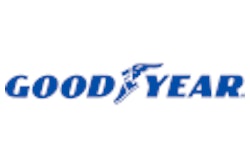Ohio-based owner-operator Duane Chatlain’s tire dealer told him the first thing he’d do if he found a tire with sealant inside was to “put it back on the truck. They say it’s a mess – it supposedly works good, but when you go to change tires, you can hardly get it off,” he says.
Such negative sentiment springs from ineffective products brought quickly to market decades ago, says MultiSeal National Sales Director Craig Russell. “When they came out 30 years ago, they immediately got picked up by a lot of large fleets and caused a lot of corrosion problems in the wheel and rubber degradation in the casing.” Large liability suits, he adds, resulted. “The large truck industry and the tire industry almost completely stopped using them,” Russell says.
But sealants have improved and are back on the market with growing acceptance by fleets. MultiSeal has a big presence in refuse hauling. Ride On, another sealant, is in use in Pennsylvania-based Smith Transport – now part of U.S. Xpress – and other fleets.
The Technology and Maintenance Council of the American Trucking Associations’ Recommended Practice 242, dealing with evaluative procedures for tire-related products, uses a positive sealant case study as an example. And Goodyear’s DuraSeal technology, which includes a sealant built-in from the factory, is available on a trailer tire and illustrates growing industry acceptance.
Furthermore, at a cost of around $20 per tire, including installation, aftermarket sealants can easily pay for themselves by avoiding just a single road call from a down tire.
Increased acceptance led to a proliferation of makers. “Anybody with a bathtub in their backyard can mix up some stuff and try to sell it as a tire sealant,” says Fred Duncan of Delta First, maker of Sealitup, cutting right to the main problem for owner-operators considering such a product: quality. Many sealants claim the ability to seal punctures up to a certain size, but few can withstand the centrifuge effect inside a truck tire moving at highway speeds.
“Only about five or six legit companies” are making sealants, says Duncan. Among those, MultiSeal in particular has made “re-education efforts” aimed at over-the-road haulers and the tire industry in “what it takes to make a high-performance sealant,” says Russell.
By “high-performance” he means sealant that can withstand high-speed pressures that can cause most mixtures to separate. In low-quality sealants, this ends their effectiveness.
Inovex President Mark Farkhan says the key benefit of the Ride On product is its ability to keep tire pressure where it needs to be longer, even when there is no puncture. “If you’re low on air,” Farkhan says, “you increase your rolling resistance, which heats up your tire, and your engine’s working harder.” He estimates greatly increased casing life and a 3 percent increase in fuel efficiency with Ride On use.
Because rubber is porous, all tires leak, says Russell of MultiSeal. “As those tires become underinflated, they get soft and spongy, and that’s when they start picking up debris. Our data supports that a properly inflated tire will be hard, and a hard tire will deflect more objects away than it takes in.”
That translates to savings: less money spent on tires and less time spent filling them up with air. And where the centrifuge of a quickly spinning tire can cause separation of the materials in the sealant, leading to an out-of-balance tire vibration, high-speed sealants are sold as balancers. Farkhan says Ride On contributes to balance in a way similar to “what powder balancers do,” distributing the sealant evenly in the tire to aid balance and promote more regular wear – another boon to longer tire life.
Sealant’s biggest problem remains the lack of familiarity or, in extreme cases, unwillingness of many tire shops and mechanics to work with a tire containing sealant. If a sealant separates, Farkhan says, when you remove the tire, the sealant is “all over the place.”
Separation of components in a bad sealant’s mixture, too, can cause the contents to become acidic, which leads to corrosion not only for the wheels but for the steel belts in the casing, says Farkhan. That means no retread capability. Retreaders are also often wary of putting a new cap on a tire that has used sealant because of fires breaking out in the heating chamber where recapped tires cure. A good sealant and its residues will have been tested for retread curing process-level temperature and pressure stresses.
That’s not the only problem with sealants and retreading. “Retreading faces several problems when you add things to the tire,” Farkhan says. To properly recap, technicians must remove all foreign objects from the tire and do a vulcanized repair of any punctures – in a tire using sealant, this means locating sealed punctures and removing the sealant fibers that have plugged the puncture. But when many of the sealants use rubber compounds among their fibers, locating the sealed punctures can be difficult for a retreader, Farkhan says. “If he misses them, recap failure is the result.”
Retreading is where tire makers get concerned about aftermarket sealant use. Bridgestone’s position, says spokesman Don Darden, “is that as long as it doesn’t damage the casing in any way, we don’t get into the business of recommending or not recommending any sort of product.”
Michelin’s Ryan Fisher concurs, adding that “prior to using any type of sealant, Michelin strongly recommends that the customer make sure the sealant has been tested and certified by the sealant manufacturer as being safe for use in tires.” A maker of a good sealant will do extensive testing, often presenting documentation on a website (see a href=”http://www.ride-on.com”target=”_blank”>www.ride-on.com and a href=”http://www.multi-seal.com”target=”_blank”>www.multi-seal.com for good examples). Fisher warns against use in tires with sensors in them, as “the sealant may adversely affect the performance of the sensors.”
Non-aqueous sealants, or those containing little to no water, are less likely to impact steel belts in your radials, Fisher says. To remain non-aqueous, it’s important to store extra sealant in an air-conditioned environment and to firmly reseal the container after use “to prevent the absorption of moisture from the atmosphere,” he says.
Finally, a sealant should be useful for the life of the casing, say both Russell and Farkhan. Some sealants harden after time. “Is that compound going to get hard after two and a half years?” asks YRC Worldwide’s Don Pabst, vice president for maintenance, who’s overseen fleet tests with aftermarket sealants and last year began a road test of 1,000 trailers outfitted with Goodyear’s DuraSeal trailer tire. “Will it plug the holes on the second and third cap on these casings?”
Durability, retreading and corrosion issues aside, the primary job of tire sealants is to seal punctures. Smith Transport Maintenance Vice President Jeff Musselman, whose fleet is outfitted with Michelin X One wide singles and duals utilizing the Ride On sealant, has first-hand knowledge of their success. Smith Transport considered using a sealant after transitioning to wide singles on many of its company trucks to increase fuel efficiency and save weight. At first, Musselman says, “we were having a specific tire issue with wide-base tires building heat when they lost air, really leading further down the road to bigger problems, like the destruction of vehicles.” The chief drawback of using wide singles for many owners is the potential danger from a blowout, which is less of a concern when running duals, except in the steer position.
“We’ve fixed that problem with a tire sealant,” Musselman says.
Smith Transport has seen the improvement in fleet data compiled over three years. To show the sealant’s sealing capability, Musselman points to a tire the fleet’s recapper recently rejected for new tread. “The tire had 11 nail holes in it,” Musselman says, too much of a liability for future life as a recap. However, “that tells me right there that this stuff works,” he says. “The tire ran its first life out just fine – with any other tire with that many punctures, it would long ago have failed.”











